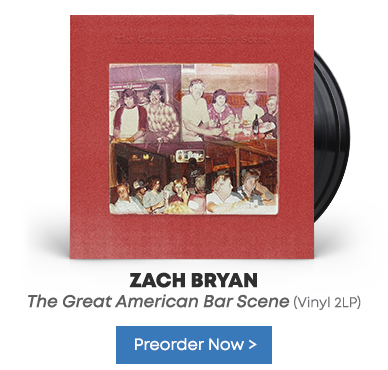Famed director John Singleton (Boyz n the Hood) landed on television this week with "Snowfall," a new series for FX. The show essentially views Los Angeles as a character, with the debut episode set in and around various ethnic pockets in the city, circa 1983. "Snowfall" deals with heavy subject matter – namely, the beginnings of the crack-cocaine epidemic. We'll leave such matters to Singleton and his team. Instead, "Snowfall" provides us with the excuse to examine the L.A. music scene in the early 80s. It's vast and, like the city itself, blessedly diverse. Here are five must-hear albums from L.A. acts released between 1980 and 1985.
Egyptian Lover On the Nile
Thanks to Sugarhill Gang and Kurtis Blow, some of the biggest hip-hop records of the early 80s stemmed from New York. That's not to say a burgeoning rap scene didn't exist in Los Angeles – even if the city lacked a label and radio station to fully champion the movement. And while N.W.A established L.A. as a hip-hop powerhouse later in the decade, the DJ Egyptian Lover, still active today, was the artist at the center of many underground dance and hip-hop gatherings. His 1984 album On the Nile is loaded with lascivious electro-funk, so much so that a track like "Girls" may even make some blush. Vocally, Egyptian Lover often takes a spoken-word approach. Yet the grooves on songs such as "And My Beat Goes Boom" and "Computer Love (Sweet Dreams)" come on like retro-synth reveries.
The Whispers Imagination
Venerable soulful shape-shifters the Whispers have been a staple of the West Coast R&B scene since the late 60s. The act, still anchored by brothers Wallace "Scotty" Scott and Walter Scott, experienced some pop success after the release of 1980's Imagination. A song from the latter, "Up on the Soul Train," even briefly served as the theme song for the Don Cornelius' instrumental "Soul Train," a show that provided a televised platform for many urban artists. For much of the 70s, the Whispers cemented their reputation as romantic crooners. Yet on albums such as Imagination, the group boogied with the best of ‘em. Full of rubbery bass lines, out-of-this-world synthesizers, and charmingly slick pleas to have a good time, tunes such as "It's a Love Thing" and "Continental Shuffle" remain sure-fire party-starters.
Oingo Boingo Nothing to Fear
Wild and erratic, the Danny Elfman-led Oingo Boingo brought a global, wide-screen approach to new-wave, with an emphasis on weird. Just, what, exactly, is going on in "Insects"? The song often sounds like a cartoon jungle, with random sounds and frantic yelps. There's a lot to unpack, too, in "Wild Sex (In the Working Class)," where a casually swinging horn section brings a sense of refinement to the daily grind depicted in the lyrics. Yes, Elfman's high-pitched voice can be a love-it-or-hate-it affair. He sings and articulates as if enunciation is more important than serving the melody. No matter. Nothing to Fear exemplifies the kooky albeit serious tone of the city from which it's born, and while Oingo Boingo would get more topical and become more poppy, this 1982 effort presents the band with its edges fully intact.
The Bangles All Over the Place
Before the Bangles caught the attention of Prince, who penned the band's hit "Manic Monday," they stood, along with the Dream Syndicate, as one of the forebears of L.A.'s Paisley Underground scene – a loose connection of artists with a love for 60s pop. On 1984's All Over the Place, the Bangles pair chiming, jangly guitars with an ever-so-slight punk-rock attitude. While heavily influenced by the likes of the Velvet Underground, the Bangles' sound is ultimately cleaner and brighter, as evidenced by upbeat takes on 60s-era songs from Katrina and the Waves and the Merry-Go-Round. Ultimately, the record presents the band at its guitar-centered best. The slinky "James" marries flowery notes to a kiss-off strut. "Hero Takes a Fall" bursts with harmonic urgency. And despite the sweetly welcoming vocals of Susanna Hoffs, the Bangles carry plenty of fury (see "He's Got a Secret").
Los Lobos How Will the Wolf Survive?
When East L.A.'s Los Lobos unleashed How Will the Wolf Survive? In 1984, it was as if the band had discovered a new genre. As the group's second proper album, it set a template for all Los Lobos would explore through its still-vital career. The title track documents the experience of an immigrant, and does so with regal and restrained instrumentation that blends American and Mexican roots music. Elsewhere, Los Lobos go all bluesy on "Don't Worry Baby" but stick closer to the heritage of its members on "Corrida #1." This mix of traditional Mexican folk, the blues, Tex-Mex, rock n' roll, R&B, and more proved only uniquely American, but representative of the diversity of Los Angeles. And that says nothing of the ace musicianship and cool-under-pressure approach of vocalist/guitarist David Hidalgo, which remain Los Lobos hallmarks.
7th Jul 2017




































